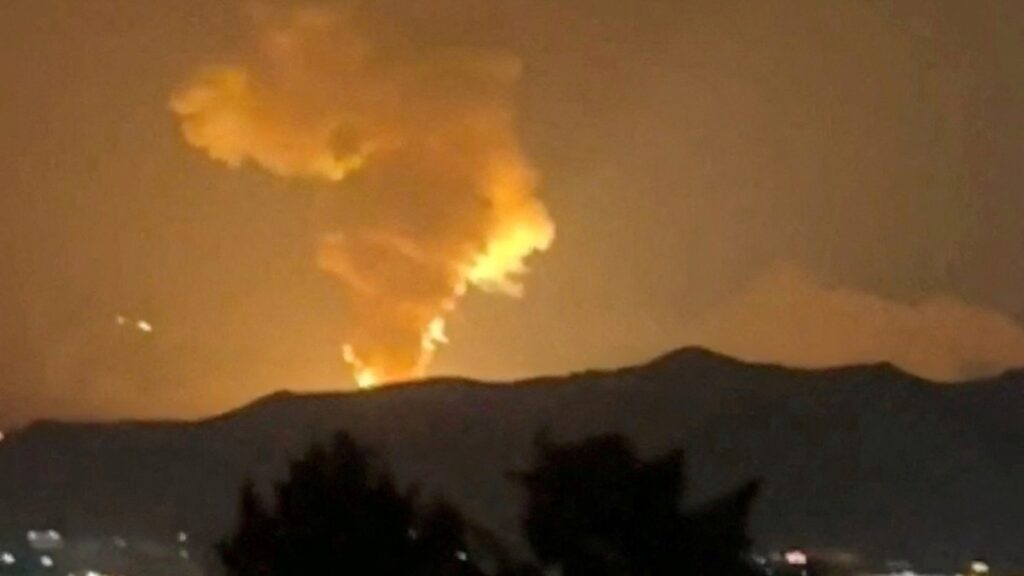Israel’s ongoing military assault on Iran has already become one of the most consequential cross-border strikes in the region’s recent history. Far more than a targeted operation against missile silos or nuclear facilities, it has included high-profile assassinations and sophisticated cyberattacks. Among the most significant developments so far has been the assassination of several senior Iranian commanders, including Major General Mohammad Bagheri, Islamic Revolutionary Guard Corps (IRGC) commander Hossein Salami and the head of its Aerospace Force, Amir Ali Hajizadeh. These targeted killings represent the most severe blow to Iran’s military leadership since the 1980-1988 war with Iraq. Yet, beneath the surface, the assault is not merely a military manoeuvre – it is the expression of a political doctrine decades in the making.
While Israeli officials publicly framed the operation as a preemptive act to prevent Iran from acquiring a nuclear weapon, its deeper strategic logic appears increasingly clear: the destabilisation – and eventual collapse – of the Islamic Republic. For years, Israeli and some American strategists have argued – sometimes discreetly, sometimes overtly – that the only durable solution to Iran’s nuclear ambitions is regime change. The current campaign aligns with this longstanding objective, not only through military means but also via psychological, political and social pressure inside Iran.
Recent developments suggest the operation was designed to provoke the early stages of an internal uprising. The playbook is familiar to observers of past regime‑change efforts: assassinations of top military officials, psychological warfare, disinformation campaigns and the symbolic targeting of state institutions. In Tehran, Israeli‑backed cyberattacks and precision strikes have reportedly hit government buildings and ministries, even temporarily disrupting national television broadcasts – a key pillar of the Islamic Republic’s communications infrastructure.
Israeli political rhetoric has echoed this direction. In closed briefings and selected media interviews, officials have acknowledged that Iran’s deeply fortified underground nuclear facilities – some reportedly buried more than 500 metres (1,640ft) beneath the Zagros and Alborz mountains – cannot be destroyed without full United States participation. Specifically, the operation would require the use of GBU‑57 “Massive Ordnance Penetrator” bombs, deliverable only by American B‑2 or B‑52 strategic bombers. In the absence of such capabilities, Israeli leaders appear to have concluded that halting Iran’s nuclear programme is impossible without a change in government.
This context lends new meaning to Israel’s concurrent military and political efforts. In the aftermath of the attacks, Israeli messaging aimed at the Iranian public intensified, portraying the IRGC not as national defenders but as the chief oppressors of the Iranian people. The messaging sought to separate the Islamic Republic from the Iranian nation with slogans such as: “This is not Iran’s war. This is the regime’s war.” Iranian opposition figures abroad – including Reza Pahlavi, the eldest son of the last shah of Iran, and former footballer Ali Karimi – echoed these narratives, expressing support for the strikes and calling for regime change.
However, the strategy may have produced the opposite effect. Rather than igniting mass revolt or fracturing national unity, the attacks appear to have consolidated public sentiment across political lines. Many Iranians, including longtime critics of the regime, have expressed anger over what they perceive as a foreign assault on national sovereignty. The collective memory of external intervention – stretching from the CIA‑backed 1953 coup to the Iran‑Iraq War – has reactivated a deeply embedded defensive reflex.
Even among activists from the “Woman, Life, Freedom” movement – which sparked nationwide protests after the 2022 death of Mahsa Amini in police custody – there has been visible reluctance to align with foreign military intervention. As images of bombed‑out buildings and fallen Iranian soldiers circulated, a mood of empathy and solidarity momentarily replaced the demand for regime change. For many, the conversation has shifted from political reform to national defence.
Notably, several public figures and former opponents of the Islamic Republic voiced support for Iran and denounced the Israeli attacks. Football legend Ali Daei declared, “I prefer to die rather than be a traitor,” rejecting cooperation with any foreign assault. Mohsen Borhani, a former judge and political prisoner, wrote, “I kiss the hands of all defenders of the homeland,” referring to the IRGC and other armed forces.
What began as a calculated strike on military targets may be achieving the opposite of its intended outcome. Rather than weakening the regime’s hold on power, Israel’s actions risk reinforcing it – by rallying national unity and silencing dissent. The attempt to engineer revolution from outside may not only fail – it may backfire.
If Israel’s ultimate aim was to catalyse a regime collapse, it may have underestimated the historical resilience of Iran’s political system and the unifying power of national trauma. As bombs fall and generals die, Iran’s social fabric does not appear to be fraying. Instead, it may be stitching itself back together.
The views expressed in this article are the author’s own and do not necessarily reflect Al Jazeera’s editorial stance.
https://www.aljazeera.com/opinions/2025/6/18/israel-tried-to-break-iran-but-it-may-have-actually-helped-unite-it?traffic_source=rss


